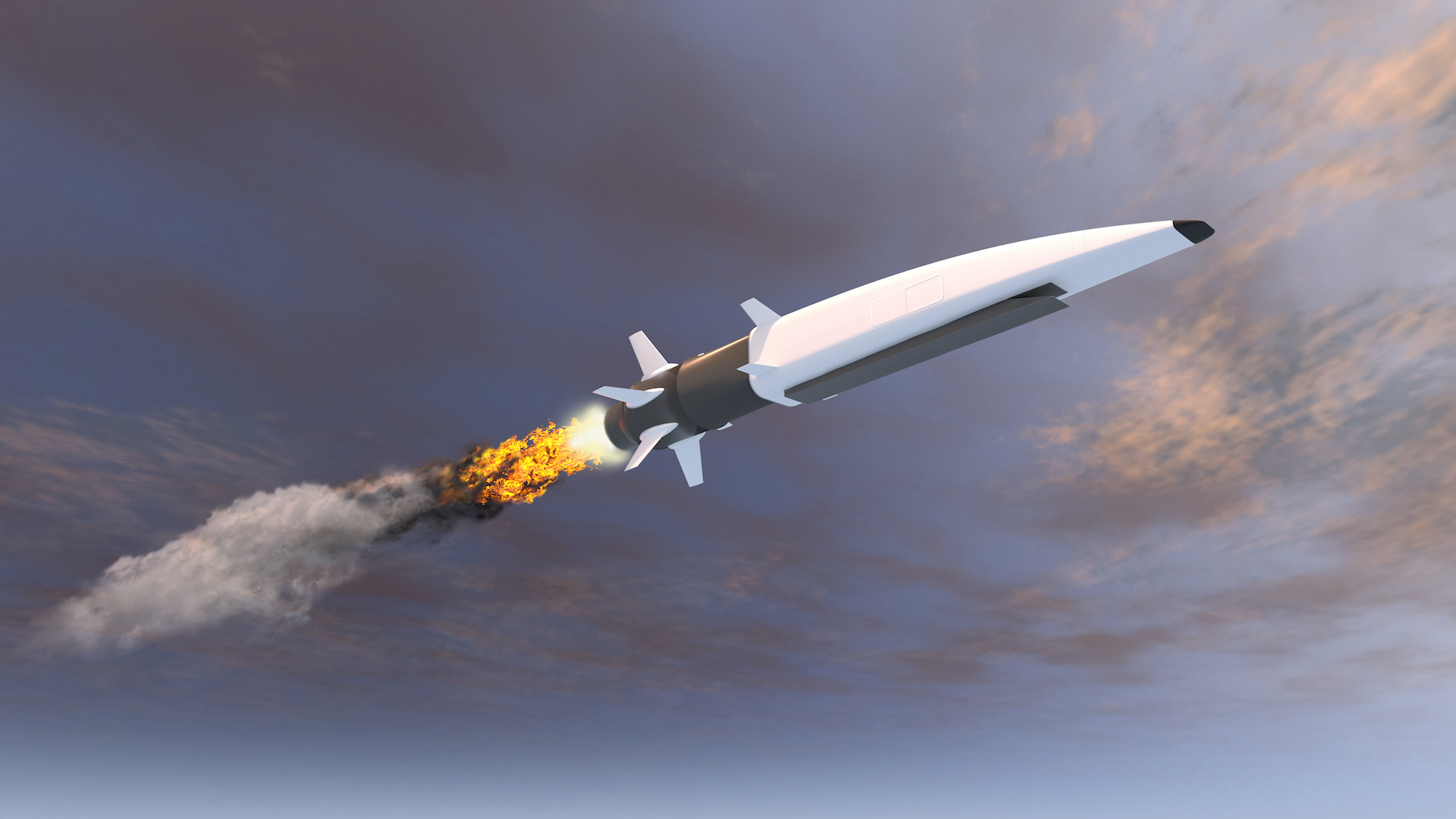Hypersonic weapons are emerging as one of the most significant strategic weapon types within the evolving geopolitical landscape and the intensifying arms race among key nuclear powers. The United States has been a pioneer in hypersonic technology development since the 1950s. Hypersonic weapons can maneuver and achieve scramjet cruise speeds of Mach 5 and beyond. Today, the escalating arms race in the Indo-Pacific between the U.S. and China is becoming increasingly relevant due to shifts in the global nuclear order and the restructuring of the so-called Nuclear Cascade. There is no doubt that hypersonic weapons will play a central role in shaping the future of this arms competition.
The Washington-Canberra Strategic Axis: A New Era of Military Cooperation
The U.S. has prioritized strengthening defense cooperation with Australia to bolster its military presence and maintain strategic superiority in the Indo-Pacific. Deepening military integration between Washington and Canberra has emerged as an alternative approach to solidifying U.S. influence in the region. The rapidly shifting geopolitical and strategic landscape has prompted the White House to reorient its defense priorities in response to China’s growing military power, particularly its strategic weapons advancements and Nuclear Triad.
During Barack Obama’s presidency, the U.S. sought to intensify hypersonic cooperation with the European Union as part of broader transatlantic defense initiatives. Initial joint efforts focused on developing civilian hypersonic technologies, with plans to expand into military applications. European officials believed that these initiatives could eventually integrate into NATO’s defense infrastructure. However, these projects were largely abandoned due to a shift in U.S. policy regarding hypersonic technology collaboration with European nations. Furthermore, some European states prioritized civilian hypersonic projects over military cooperation with the U.S., undermining the potential for joint defense programs.
As a result, key European players failed to develop a unified approach to hypersonic weapons research. The U.S. began viewing Europe as an unreliable partner in fostering hypersonic cooperation, citing a lack of tangible progress in joint projects. The White House signaled that it no longer regarded Europe as a primary ally in this field. Consequently, Washington sought a more stable partner for the development of advanced hypersonic cruise missiles (HCM) and hypersonic glide vehicles (HGV). Australia emerged as the ideal choice due to its deepening military ties with the U.S. and its strategic alignment with Washington’s Indo-Pacific objectives.
Additionally, the increasing geopolitical significance of AUKUS has strengthened the foundation for U.S.-Australian cooperation, particularly in countering China’s rising influence. It is clear that the U.S. has redirected its hypersonic collaboration efforts toward Canberra, given the inefficiencies encountered in its partnership with the EU.
In 2024, the U.S. began financing a wide range of startups founded by Australian students in the field of hypersonic technology development. Joe Biden’s presidency marked a period of total reconceptualization of hypersonic cruise weapons. Furthermore, the White House started paying more attention to China’s growing hypersonic capabilities in the Indo-Pacific, emphasizing that the latest military activities of the PRC posed an increasingly critical threat to U.S. national security. This concern stemmed from China’s intensified production of hypersonic strategic weapons such as the DF-21 and DF-ZF, which utilize hypersonic scramjet technology. The U.S. has significant concerns regarding China’s rapid advancements in hypersonic weaponry, which could continue expanding at an accelerated pace. Against this backdrop, U.S.-Australia hypersonic cooperation is becoming increasingly relevant.
On August 5, 2024, U.S. Department of Defense officials stated that Australia and the U.S. are making significant progress in the design and ground testing of an air-launched hypersonic weapon under the Southern Cross Integrated Flight Research Experiment, or SCIFiRE. “We’re … working collaboratively on cutting-edge hypersonic technologies that will provide a critical advantage to the warfighter,” senior U.S. DoD officials said at a Pentagon press conference. It is crucial to highlight that U.S.-Australia cooperation in developing a mutual hypersonic program has deep historical roots. However, the comprehensive framework for the program’s expansion was established only at the beginning of Joe Biden’s presidency. The merging of the two countries’ capabilities in the field of hypersonic development may signal the declining effectiveness of U.S. hypersonic weapons. Losing its status as a “hypersonic pioneer” has diminished the U.S.’s strategic superiority. Meanwhile, China has developed a more efficient hypersonic program, featuring both intercontinental hypersonic cruise missiles and medium-range hypersonic weapons — an arsenal that surpasses the scope of U.S. hypersonic capabilities, particularly amid repeated American test failures.
The Strategic Necessity of the U.S.-Australia Hypersonic Program
The development of a new strategic hypersonic infrastructure in Australia could be the U.S.’s last hope for enhancing the effectiveness of next-generation strategic weaponry. Hypersonic weapons can be deployed without nuclear warheads, classifying them as non-nuclear strategic weapons (NNSWs) despite their immense combat potential. The Treaty of Rarotonga (1985), prohibits nuclear testing in the Pacific Ocean due to the establishment of the South Pacific Nuclear-Free Zone. However, testing new hypersonic weapons under the U.S.-Australia mutual program would not constitute a legal violation of this treaty, as hypersonic weapons are categorized as NNSWs. Nonetheless, this situation could be perceived as one of the most precarious developments in the context of international nuclear law, especially given the increasing nuclear-related activities of AUKUS in the region.
With the U.S.-Australia partnership, the Pentagon expects to begin fielding munitions starting in fiscal year 2027. Furthermore, the U.S. Department of Defense plans to fully integrate the U.S. Aegis missile defense system and anti-satellite weapons with the broader U.S.-Australia hypersonic program. This decision could feasibly serve as the West’s response to China’s deployment of its Anti-Access/Area Denial system (A2/AD system). The U.S. strategic policy reflects a new approach to deterrence against China, aimed at reinforcing Pax Americana’s supremacy in the Indo-Pacific while preventing China from emerging as a geopolitical alternative. The signing of a joint agreement between the U.S. and Australia within the framework of AUKUS signals a renewed Western effort to solidify its influence in the region through comprehensive strategic actions and an integrated deterrence policy directed at Washington’s main rivals. Additionally, the development of Pillar II Hypersonic Systems could accelerate the establishment of critical military infrastructure designed to enhance deterrence, create a robust strategic environment, and develop a hypersonic defense system with a high level of nuclear risk management, particularly in response to China’s A2/AD capabilities.
According to expert communities worldwide, the current challenges facing the U.S. strategic system can be divided into two key components during Donald J. Trump’s second presidential term: the necessity for multilateral modernization of nuclear warheads and the development of a new version of the U.S. Nuclear Posture Review. This period could mark a strategic turning point in the hypersonic rivalry in the Indo-Pacific, as the U.S. administration may decide to deploy key defensive and offensive infrastructure, with hypersonic weapons playing a central role in the implementation of a neo-deterrence policy. As part of this initiative, Australia and the U.S. signed an agreement to establish a mutual strategic framework, including the deployment of the Aegis system in several Australian states. Australian government officials announced that this agreement, signed on March 29, 2024, aims to enhance the operational effectiveness of the Aegis Weapon System by enabling it to detect, track, engage, and intercept medium-range ballistic missile (MRBM) targets in the terminal phase of flight. Additionally, Washington has committed to increasing Aegis system deliveries to Australia through 2030. This agreement signals the formation of a joint U.S.-Australia integrated deterrence system, aligned with the broader U.S. objective of modernizing its Nuclear Triad. As outlined in the U.S. Nuclear Posture Review, Australia is expected to play a critical role in this process. Consequently, this initiative may also involve the deployment of U.S. medium-range hypersonic cruise missiles in Australia as part of efforts to reshape the strategic deterrence framework against China and enhance U.S. hypersonic capabilities, which could potentially neutralize the Chinese A2/AD system.
Conclusion
The U.S.-Australia hypersonic program represents the foundation of a future strategic environment, incorporating key components of both nuclear and conventional deterrence. The success of the new hypersonic architecture within the U.S.-Australia strategic alliance depends on the formulation of a revised U.S. strategic agenda for the Indo-Pacific and the definition of new deterrence principles, soon to be outlined in the upcoming U.S. National Security Strategy (NSS) under the Trump-Vance administration. The U.S.-Australia hypersonic program is emerging as a comprehensive strategic initiative aimed at integrating hypersonic weapons into broader defense capabilities, encompassing both non-nuclear strategic weapons (NNSWs) and nuclear assets. However, doubts remain regarding the program’s effectiveness, given its recent revision within the evolving framework of U.S. integrated deterrence. Moving forward, it will be crucial to monitor developments, particularly in the event of escalating U.S.-China tensions.
Keywords: Arms Control; Hypersonic Weapons; International Security; Strategic Stability
AC
F4/SOR – 25/02/06


